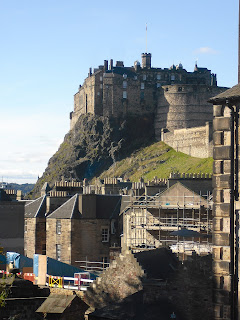Inverness Area
Loch Ness A whirlwind
trip to Scotland started with Inverness and Loch Ness.
The Scottish highlands are beautiful but the eastern
hills are not as steep or high as I expected. It is surprising how many high
flat pastures and fields there are.
Culloden Battle Field This was the
battle that ended the power of the Scottish Highland clans and started years of
repression of Scottish culture by the English.
Neolithic burial chambers that are 3000 to 4000 years old. There are three cairns. Two have entrance passages that line up with the setting sun at the winter solstice. The third has a open center area but no passage way to it. As with most prehistoric sites in England no one is sure how they were used.
Edinburgh Area
Edinburgh Castle
This is
where Edinburgh started 1300 years ago.
It has been a fort and royal residence since the 11th century
and most buildings are still used today. St. Margaret’s Chapel inside the
castle is the oldest building in Edinburgh completed in 1130.
View from Elephant
House Café is where J. K. Rowling wrote Harry Potter. Does it make you think of
Hogwarts?
Royal Mile The road
from the castle to Palace of Holyrood House.
Hadrian’s Wall
When the
Roman army couldn’t conquer Scotland, they built a wall to mark the end of the
empire or civilization and to keep the Picts out. It ran from coast to coast, 73 miles, with a Castle
and gate every Roman mile. Parts of the wall remain as do outlines of several
forts, but most of the rocks were taken to build houses, churches and field walls
after the romans left. The amount of
artifacts that have been found and are still being excavated is amazing. |
| On wall where it is part of the Housestead roman fort |
 |
| Vindolanda Roman Fort near Hadrian's wall |























